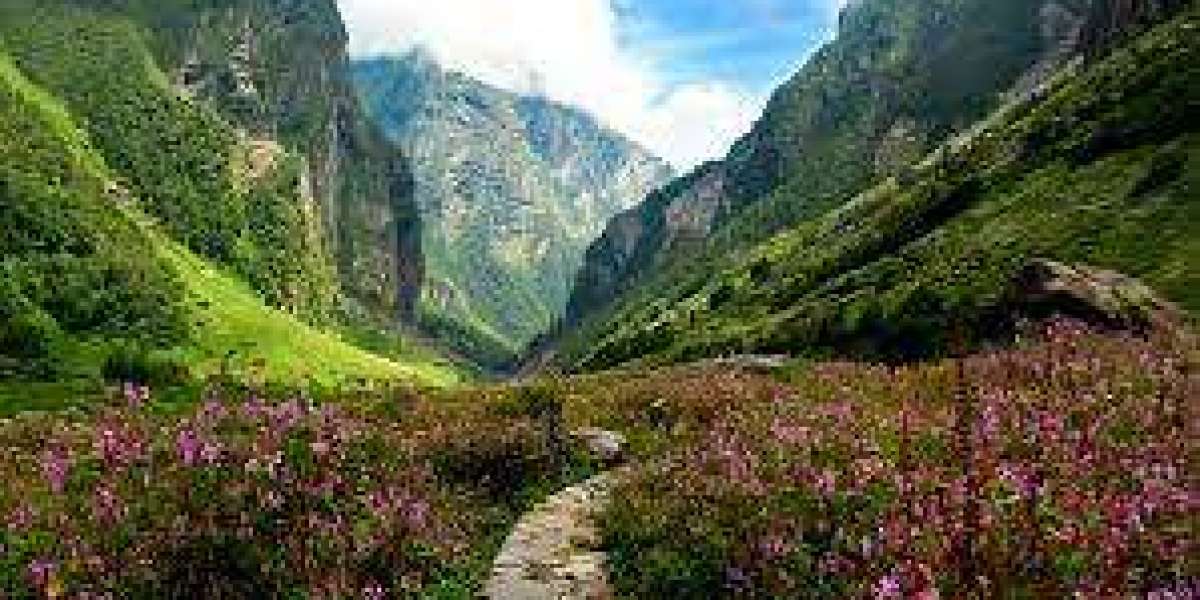Summary:
The Valley of Flowers Trek is a floral symphony, a masterpiece painted by nature's brush. It's a place where you can witness the true magic of biodiversity and be humbled by the natural world. It's a great chance to explore, to be awestruck, and to admire the beauty of nature that thrives in the heart of the Himalayas which will blow your mind. The Valley of Flowers is a botanical treasure trove, home to an array of flora.
Among its renowned species are the mesmerising blue Himalayan poppy, the ethereal Brahma Kamal, the enigmatic Cobra Lily, and the refreshing daisies. The valley houses several rare and endangered plant species, making it a sanctuary for botanists and nature enthusiasts.Reaching this floral wonderland involves a trek that adds an element of adventure to the experience.
The journey begins from Govindghat, a quaint town near Joshimath. The trek guides you through dense forests, babbling streams, and picturesque meadows, revealing the hidden gem that is the Valley of Flowers
.Beyond its floral wonders, the Valley of Flowers is a hotspot for biodiversity. It is also a habitat for a variety of wildlife species, including the elusive snow leopard, Himalayan black bear, and musk deer. Birdwatchers also get their haven, with a variety of avian species gracing this region.
Preface:
The pristine embrace of the Garhwal Himalayas in Uttarakhand, India, lies a place so breathtakingly beautiful and enchanting that it seems like something out of a dream – the Valley of Flowers Known with "Phoolon ki Ghati'' in Hindi, this UNESCO World Heritage Site is a natural wonder that comes to life during the monsoon season, bursting into a vibrant and colourful symphony of blooms.
Visitors must get permits, and camping within the valley is prohibited to protect its delicate natural environment. In this comprehensive guide, we embark on a journey to explore the ethereal beauty, rich biodiversity, and cultural and belief of the Valley of Flowers.
Introduction to the Valley of Flowers:
The Valley of Flowers is a high-altitude Himalayan valley situated within the Nanda Devi Biosphere Reserve. It remained a hidden gem until 1931 when British mountaineer Frank S. Smythe stumbled upon it.
Recognized for its unique floral diversity, it was declared a national park in 1982 and later earned the prestigious UNESCO World Heritage Site status in 2005.
The Monsoon Marvel:
The valley comes to life during the monsoon season, from late July to early September. This is when thousands of species of wildflowers, some of which are found nowhere else on Earth, burst into bloom, painting the landscape in a mesmerising kaleidoscope of colours. Walking through the valley feels like stepping into a living canvas.
A Rich Floral Tapestry:
The Valley of Flowers is a treasure trove of diverse flora. Some of the most renowned species include the striking blue Himalayan poppy, the ethereal Brahma Kamal (also said as Saussurea obvallata), the enigmatic Cobra Lily (Arisaema), and the refreshing daisies. It is also home to several rare and endangered plant species, making it a botanical wonderland.
Trekking to Paradise:
To reach this floral and fauna paradise, one must embark on a trek, which adds an element of adventure to the experience. The journey usually begins at the base camp of Govindghat, a small town near Joshimath. The trek winds through lush forests, cascading streams, and picturesque meadows, showing the hidden gem that is the Valley of Flowers.
The Serenading Pushpawati River:
The melodious course of the Pushpawati River, which sparkles like a ribbon of liquid silver. The trek winds through lush forests, cascading streams, and picturesque meadows, showing the hidden gem that is the Valley of Flowers. The soft murmur of flowing water becomes the soundtrack of your journey, enhancing the sensory delight of the valley.
Biodiversity Beyond Blooms:
Beyond its floral wonders, the Valley of Flowers is a hotspot for biodiversity. It provides habitat to multiple wildlife species, including the elusive snow leopard, Himalayan black bear, and musk deer. Bird enthusiasts will find joy in spotting many types of avian species that call this region home.
Hemkund Sahib – A Spiritual Detour:
En route to the Valley of Flowers lies Hemkund Sahib, a sacred Sikh pilgrimage site. Set against the backdrop of pristine Hemkund Lake, the Gurudwara (Sikh temple) at its shores grants a serene contrast to the vibrant valley. Pilgrims and trekkers often pay their respects here, finding solace in its tranquillity.
Timing Your Visit:
The best time to visit the Valley of Flowers is during its peak blooming season, which is from mid-July to early September. This is when the valley is adorned with a riot of colours. It's very important to note that the valley remains snow-covered during the winter months.
Conservation and Preservation:
Due to its fragile ecosystem and the risk of over-tourism, the Valley of Flowers is subject to strict regulations. Visitors must get permits, and camping within the valley is prohibited to protect its delicate natural environment.
In essence, the Valley of Flowers is not just a destination; it's a poetic ode to nature's artistry. It's a place where colours harmonise effortlessly, where the air is fragrant with wildflowers, and where every step uncovers a new marvel. It serves as a reminder of the exquisite beauty and fragility of our planet, urging us to appreciate and protect the natural wonders that grace our world.









